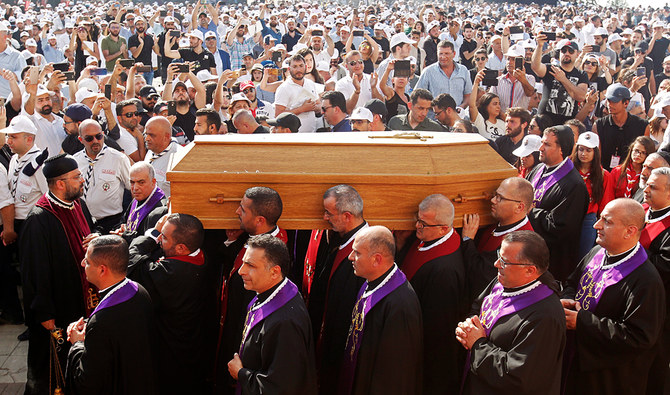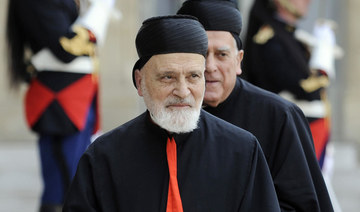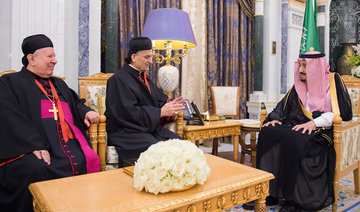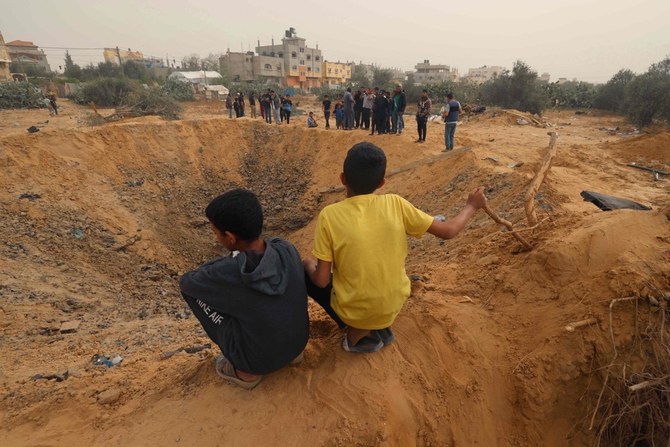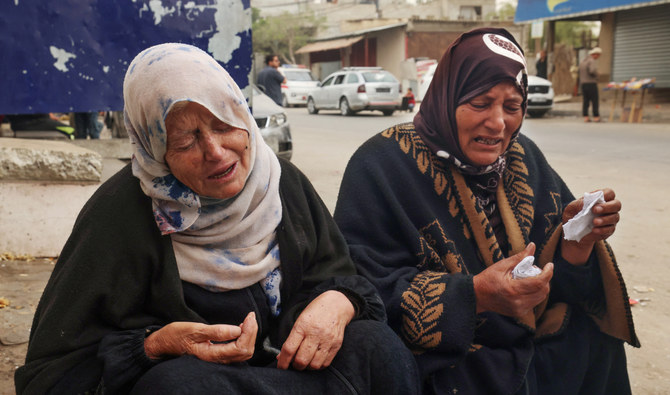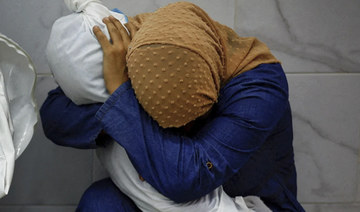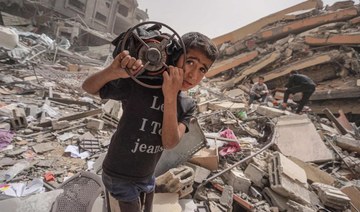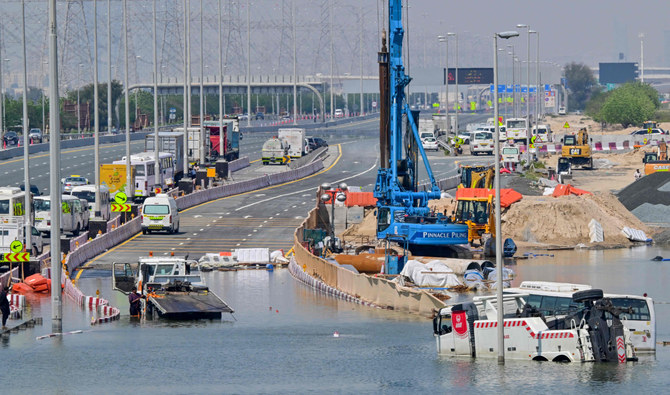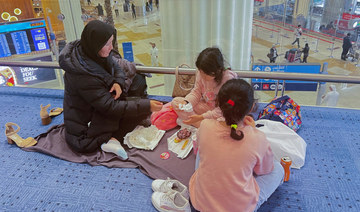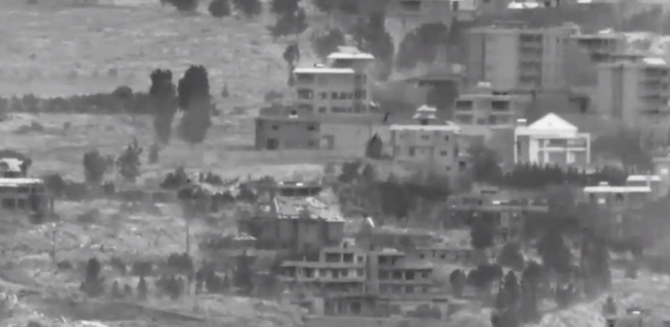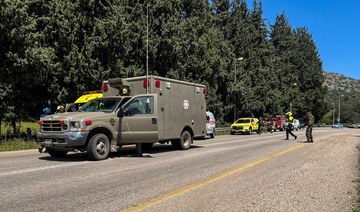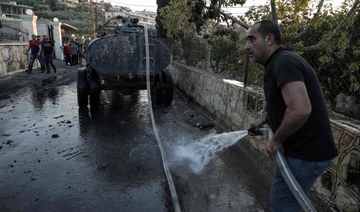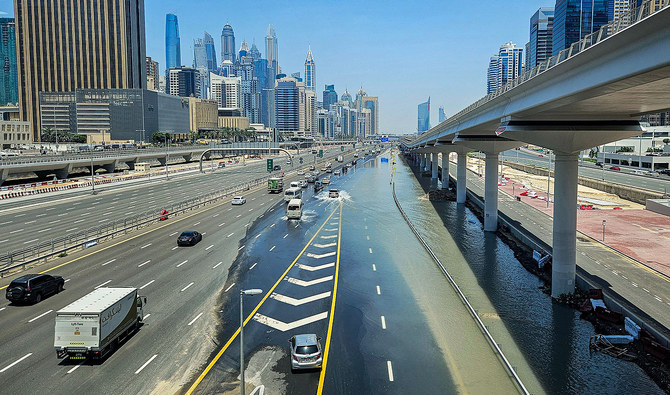BEIRUT: Lebanon bid farewell to the former Maronite Patriarch Nasrallah Sfeir on Thursday, who died at the age of 99.
“He loved Lebanon and did all he could for his war-torn country. He wanted peace and reconciliation to prevail, not just for Christians but Muslims as well. He prayed for Lebanon to remain a country of dialogue and convergence, as Pope Francis said,” noted Papal envoy Cardinal Leonardo Sandri, head of the Congregation for the Oriental Churches.
Lebanese flags were lowered at the Presidential Palace and government institutions in mourning and respect for the late Patriarch. The ancient fortress of Baalbek closed its doors in compliance with a memorandum issued by the Minister of Culture Mohammad Daoud.
Thousands of people from all over Lebanon came to Bkerki, where Sfeir’s body lay since Wednesday, to see him for the last time.
The Muslim-majority northern city of Tripoli raised pictures of Sfeir in its streets. A large Druze delegation also came to Bkerki at the request of the president of the Progressive Socialist Party, Walid Jumblatt, to pay tribute to Sfeir and his role in patronizing the Jabal reconciliation after a bloody war between the Druze and Christians in the 1980s.
While Hezbollah was absent from the funeral, Nabih Berri, speaker of the Lebanese Parliament, attended with a large delegation from the Amal Movement. The Lebanese Forces also participated in the funeral of the man they consider “the first resistant against the Syrian occupation of Lebanon.”
Sfeir was elected as the 76th Patriarch of the Maronite Church in 1986 and resigned in 2011 to be succeeded by Patriarch Bechara Al-Rahi. Born in 1920, he witnessed the birth of Lebanon and countless historical events. He provided the Christian cover to the Taif Agreement, which ended the Lebanese civil war despite the objections of President Michel Aoun, the leader of an opposition movement at the time.
Sfeir was known for resisting all the temptations and pressures exerted to force him to visit Syria.
The Future Movement called for a broad participation in paying tribute to the person who “devoted his life to protect the people’s rights, freedoms and dignity.”
Equally, the Free Patriotic Movement described Sfeir as “a great spiritual leader that marked an important period of the country’s history.”
As well as the president, prime minister, countless Lebanese politicians, and representatives from Jordan, Qatar, the Vatican and Cyprus, the French minister for Europe and foreign affairs, Jean-Yves Le Drian, also attended on behalf of President Emmanuel Macron.
The French Embassy, in a statement, described the late patriarch as “one of the great peace and reconciliation makers in Lebanon. He was a friend of France and a great patriot, who passionately defended Lebanon’s independence and sovereignty.”
The US State Department said: “Sfeir was a courageous leader in the face of tyranny and oppression. He was a champion of Lebanon’s independence and sovereignty. The US will continue to stand by Lebanon to support such role models that Cardinal Sfeir embodied.”
The Saudi Ambassador to Lebanon Waleed Al-Bukhari also participated in the funeral. He conveyed the condolences of King Salman and Crown Prince Mohammed bin Salman to Al-Rahi, saying: “Sfeir was one of the pillars of peace and coexistence in Lebanon and the World.”
The funeral was accompanied by strict security measures.
The Lebanese Army had banned “the flying of remote-controlled planes above the area where the funeral is taking place until the end of the burial.”



